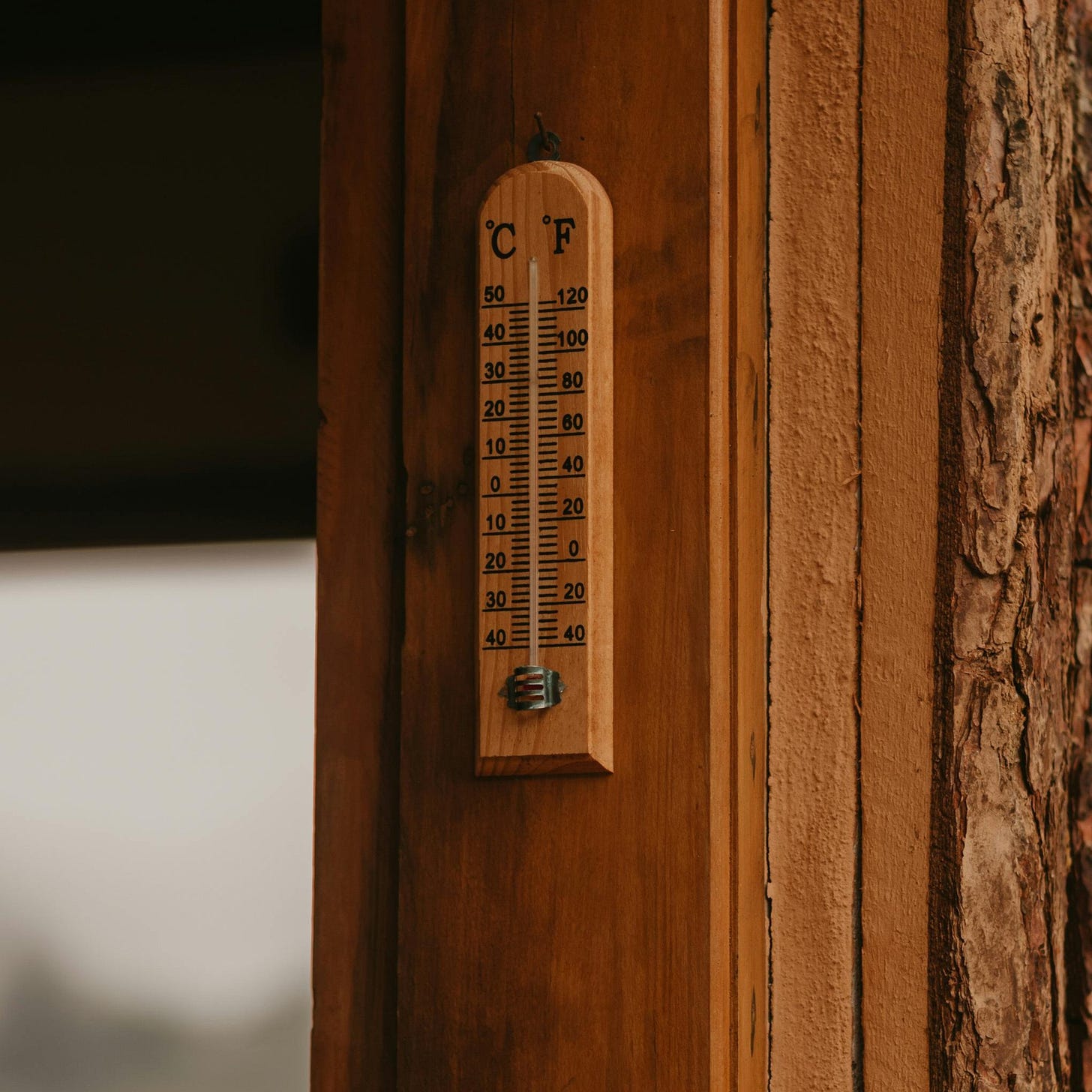Calculating water temperature is simple math, but it’s important to understand the meaning behind the equation. There are two groups of factors that determine what temperature a dough will be after mixing: the component temperatures, and the temperature change caused by the mixing process.
Component Temperatures
Bakers understand the effect of ingredient temperatures on dough temperature by thinking of the dough temperature as an average of four components: flour temperature, water temperature, starter temperature, and room temperature.
Note that of all the ingredients of any bread, only the temperatures of the flour and water are considered. That’s because they generally make up the bulk of the dough, and because there can be a large degree of variation in the temperatures of the flour and the water. In commercial bakeries, often times the flour is stored in a cooler part of the bakery. Bakers bring flour into the mixing area in such large quantities that the thermal mass can keep the flour at a lower temperature than that of the mixing room for quite some time.
In breads that use a starter of any kind, the temperature of the starter is recorded as one of the four components. Bakers take the temperature of the starter at the midway point between the center and the edge of the container that it’s in. Because the fermentation process generates heat, the starter in the center of the container may be warmer than the starter at the edge of the container. The midway point represents the average temperature for the entire container of starter. For bread recipes that do not use a starter, this component is simply eliminated from the equation. For recipes that use two or more starters, the starter temperatures are averaged out.
The room temperature is the last component, and it’s responsible for the temperature of other ingredients like oil and butter and also just the ambient temperature itself. Since the dough will bulk ferment at room temperature for a few hours, this component is an important consideration. Bakers also consider if the temperature of the room is hotter or colder than normal, and they sometimes adjust the DDT accordingly to keep the dough on track to ferment at the proper pace.
Because the flour temperature, starter temperature, and room temperature are largely out of the baker’s control, the water temperature is what the baker adjusts to compensate for the other components.
Friction Factor
But, before we can solve for X, we must consider how the mixing process will affect the final temperature of the dough. In baking, we call this the friction factor. Friction generates heat, and that’s as true when mixing dough as with anything. Each dough increases in temperature a different amount based on the mixing time and the dough’s stiffness. A stiff dough that is mixed on high speed for a long time will generate a lot of heat from friction while a wet dough that’s mixed only on low speed will barely generate any heat from friction at all. Figuring out a friction factor is really a practice in trial and error. Bakers take a guess and then adjust up or down based on the resulting dough. The good news is that friction factors are generally consistent for each specific dough, meaning that once a recipe is assigned a friction factor, it’s easy to achieve consistent results.
The Equation
So the final equation consists of adding up the four temperature components, adding the friction factor, and then dividing by four. Remember, we divide by four because there are four components. Friction changes the result of the mixing process; it is not a component in and of itself. In doughs that do not contain starter, we add up the three temperature components, plus the friction factor, and then divide by three.
We know what we want the final temperature to be, and we call this the Desired Dough Temperature, or DDT. Our equation looks like this:
(Flour Temperature + Water Temperature + Starter Temperature + Room Temperature + Friction Factor) / 4 = DDT
To use this equation to calculate the water temperature, we solve for X. As you’ll recall from math class, that involves rearranging the operations until we isolate the water temperature on one side of the equals sign. First, we multiply the DDT by four. Then, we subtract the flour temperature, starter temperature, room temperature, and friction factor. What we’re left with is the water temperature we want to use to achieve the DDT. Here are a few examples.
DDT = 73 73 x 4 = 292 292 - 68 (Flour Temperature) - 71 (Starter Temperature) - 69 (Room Temperature) - 24 (Friction Factor) = 60 Water Temperature = 60
DDT = 68 68 x 4 = 272 272 - 65 (Flour Temperature) - 53 (Starter Temperature) - 65 (Room Temperature) - 9 (Friction Factor) = 80 Water Temperature = 80
Here’s an example of a dough that does not use starter.
DDT = 70 70 x 3 = 210 210 - 71 (Flour Temperature) - 72 (Room Temperature) - 15 (Friction Factor) = 52 Water Temperature = 52
Understanding the process of calculating water temperature is important because the theory involved is essential for good bread baking. But, that doesn’t mean you must calculate the water temperature each time you bake. If you can get consistent results just using a consistent water temperature, that’s totally fine! Many of our bread recipes call for a specific water temperature just to keep things simple. But, if you want to play around with calculating the water temperature for your doughs, this is how to do it, and the practice of doing so will make you a stronger baker.
This week’s recipe is for a Multigrain Pan Loaf that builds on last week’s Challah recipe. We discuss soakers and proper mixing technique for safely incorporating them into bread dough. Let’s get baking!




